
Bryce Canyon National Park
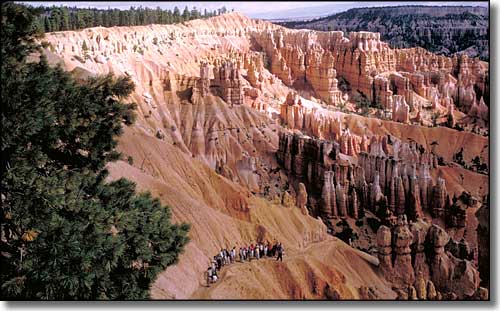
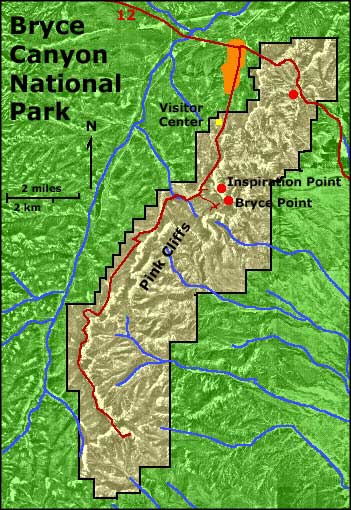
Bryce Canyon (named for Ebenezer Bryce, a Mormon who settled in the Paria Valley in 1875 and harvested timber around the edge of the canyon) is one of several horseshoe-shaped amphitheaters eroded into the Paunsaugunt Plateau of southern Utah. Some 10 million years ago, geological forces pushed up the massive blocks of the Paunsaugunt Plateau and the Tower Cliffs (further west). The single original block cracked in the middle and the Tower Cliffs were pushed up about 2,000 feet higher than the Pausaugunt Plateau. The crack in the middle opened up over time and was eroded into the Paria Valley. Over those same eons of time, flowing water carved into those stone blocks and created the "hoodoos" (the fins, spires and pillars of fantastically carved rock) that abound all through Bryce Canyon National Park.
Over the last 60 million years, this land has been up and down, sea bottom and mountain top. The Cretaceous Inland Seaway covered the land for millions of years and deposited the brown and gray materials that are found at the lowest elevations of the canyon. Then that sea was pushed north as the land was pushed up. Then, for a few million years, Bryce Canyon was at the bottom of a large freshwater lake system, and iron-rich lime-filled sediments were deposited in layers many feet thick. Then horizontal pressure was applied to the sedimentary rock as the Rocky Mountains were forming to the east. And then, 10 million years ago, the land was deformed and displaced vertically along the north-south trending fault lines. Most of what we see in Bryce Canyon is what has been exposed (and carved) by wind and water erosion since that time.
Elevations in the park vary from 6,000 to 9,105 feet. The plant life and wildlife here vary directly with the elevation. The most common large mammal found in the area is mule deer, but there are also populations of black bear, mountain lion, elk and pronghorn antelope.
Basketmaker-period artifacts several thousand years old have been found just south of Bryce Canyon National Park. Other artifacts from the Ancient Puebloan and Fremont cultures have also been found. These older cultures abandoned the area around the middle of the 12th century and then the Paiute moved in. Over time, the Paiute developed a mythology concerning the hoodoos at Bryce Canyon. They believed these were the Legend People whom Coyote, the trickster, had turned into stone.
Today, human visitors to the park number around 1.5 million annually, with the heaviest traffic in summer and the least traffic from December through February.

Inspiration Point
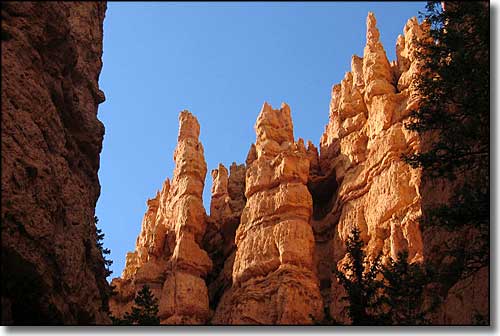
Bryce Canyon hoodoos
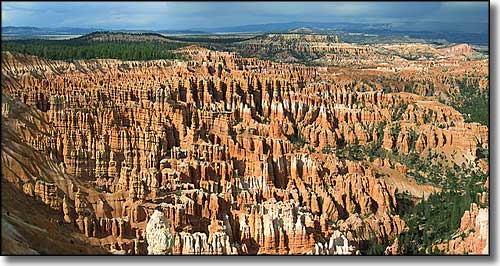
Looking over the Bryce Canyon Amphitheater
To return, use the Back button in your browser.
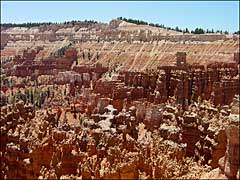 The view from Bryce Point |
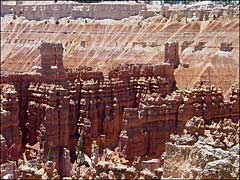 A zoomed-in view from Bryce Point |
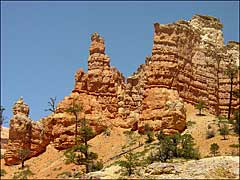 Along the Mossy Cave Trail |
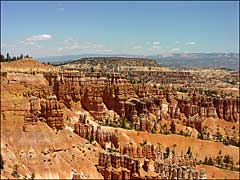 The Pink Cliffs |
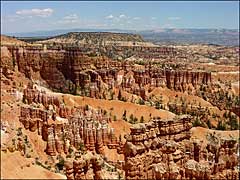 More Pink Cliffs |
 The view from Sunset Point |
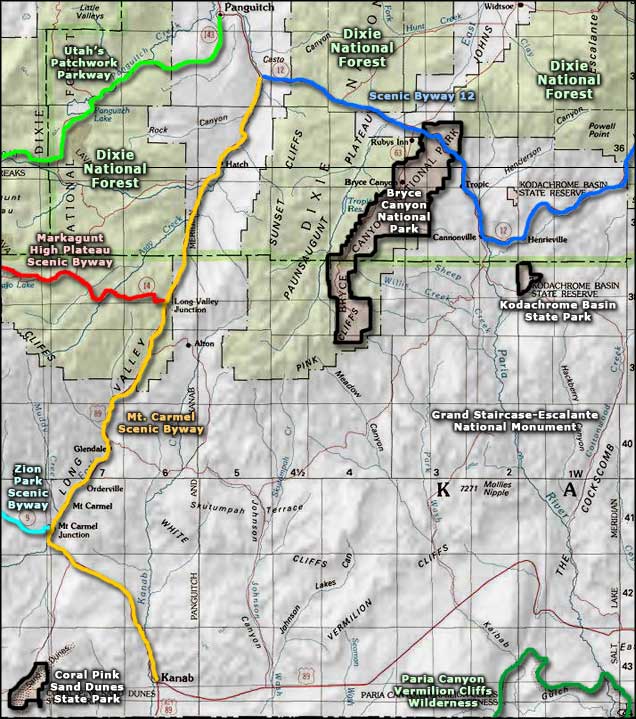
Bryce Canyon National Park area map
